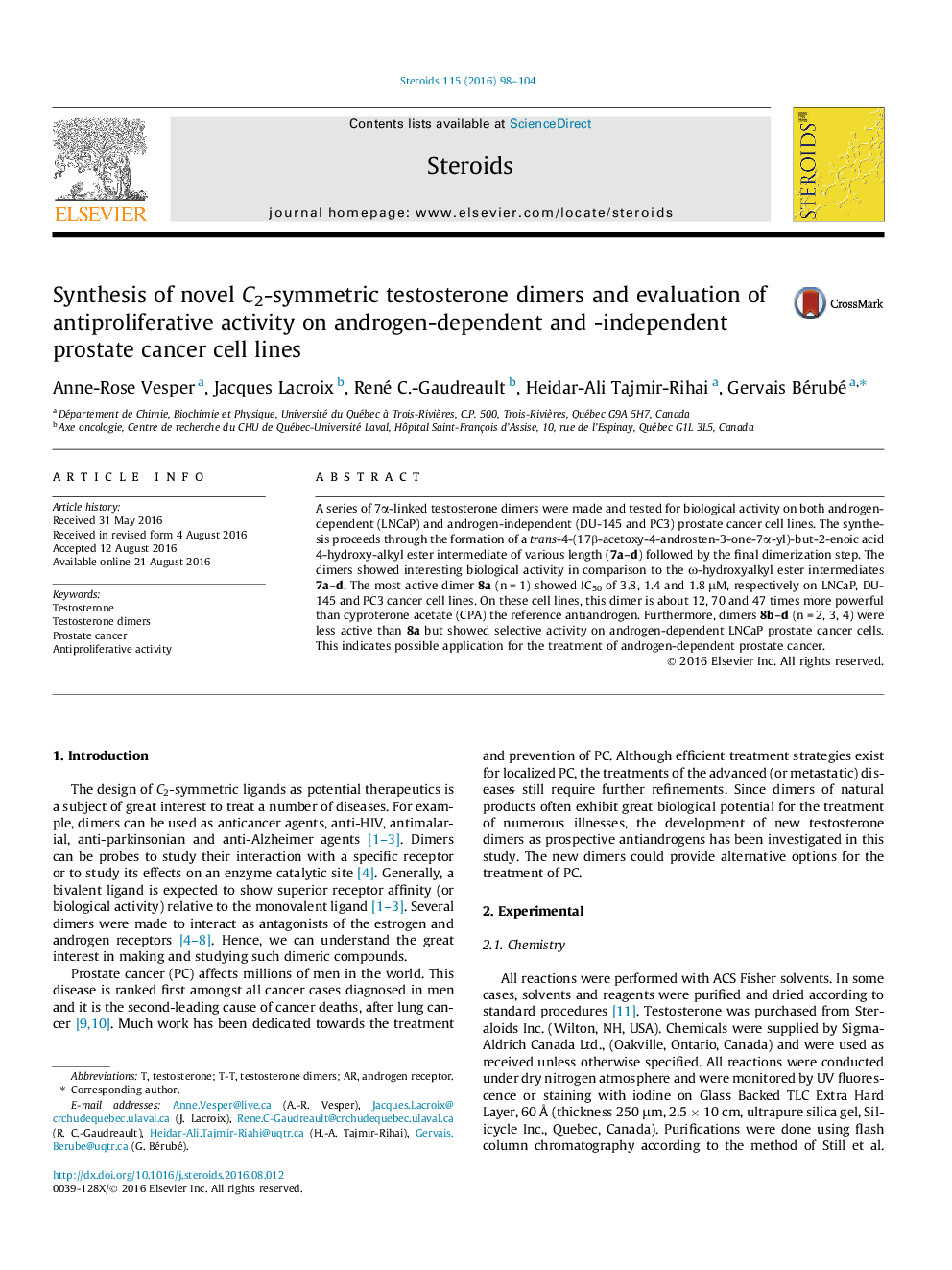| Article ID | Journal | Published Year | Pages | File Type |
|---|---|---|---|---|
| 2027499 | Steroids | 2016 | 7 Pages |
•New reported testosterone dimers linked at position 7α of androgen.•Dimer 8a is active in the micromolar range on LNCaP, DU-145 and PC3 cancer cells.•Dimer 8a is 12–47 times more powerful than the antiandrogen cyproterone acetate.•Testosterone dimers 8b–d exhibiting selectivity for androgen-dependent LNCap cells.•Testosterone dimers are more active than their respective monomeric precursors.
A series of 7α-linked testosterone dimers were made and tested for biological activity on both androgen-dependent (LNCaP) and androgen-independent (DU-145 and PC3) prostate cancer cell lines. The synthesis proceeds through the formation of a trans-4-(17β-acetoxy-4-androsten-3-one-7α-yl)-but-2-enoic acid 4-hydroxy-alkyl ester intermediate of various length (7a–d) followed by the final dimerization step. The dimers showed interesting biological activity in comparison to the ω-hydroxyalkyl ester intermediates 7a–d. The most active dimer 8a (n = 1) showed IC50 of 3.8, 1.4 and 1.8 μM, respectively on LNCaP, DU-145 and PC3 cancer cell lines. On these cell lines, this dimer is about 12, 70 and 47 times more powerful than cyproterone acetate (CPA) the reference antiandrogen. Furthermore, dimers 8b–d (n = 2, 3, 4) were less active than 8a but showed selective activity on androgen-dependent LNCaP prostate cancer cells. This indicates possible application for the treatment of androgen-dependent prostate cancer.
Graphical abstractSynthesis of novel C2-symmetric testosterone dimers linked at position 7α of the steroid nucleus. The most active dimer 8a (n = 1) showed IC50 of 3.8, 1.4 and 1.8 μM, respectively on LNCaP, DU-145 and PC3 cancer cell lines.Figure optionsDownload full-size imageDownload as PowerPoint slide
